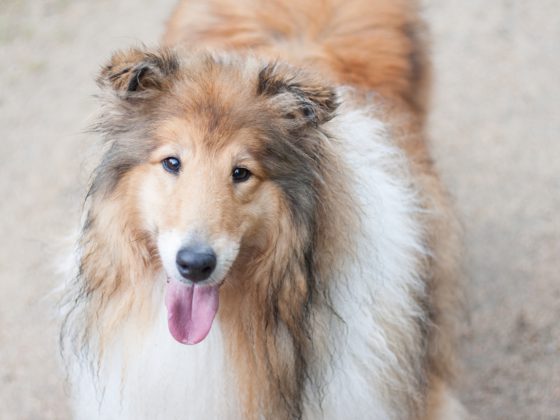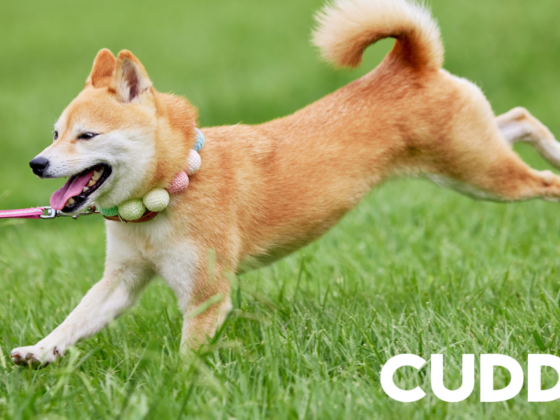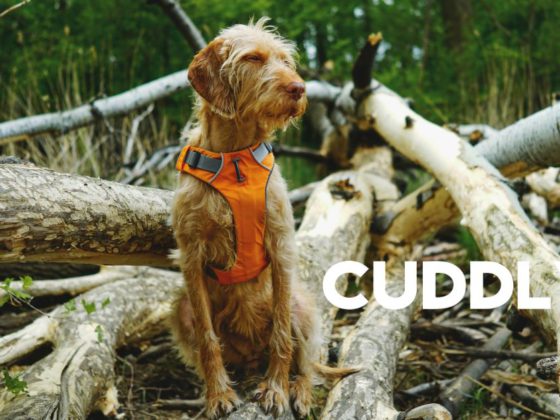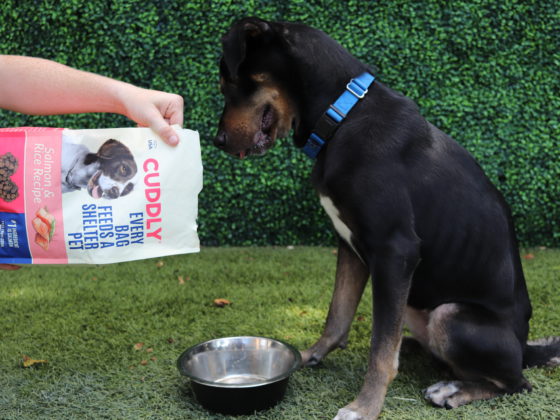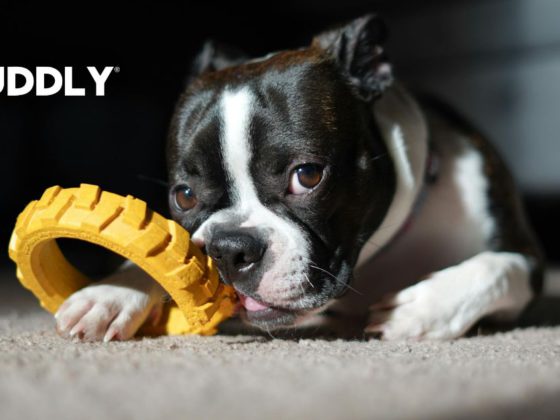Each time you watch your favorite team catch, kick, hit, or run with the ball, the last thing you ever want to witness is a knee joint injury. The minute you hear the words “torn ACL,” you gasp, pause, and take a moment as it soaks in how that player is going to be out for a while, and after surgery, rehabilitation, they may or may not ever play the game the same, if not at all again.
Dogs have a version of the ACL (Anterior Cruciate Ligament) called the Cranial Cruciate Ligament (CCL). Although, unlike humans, the CCL seldom suddenly bursts, but instead breaks down over time due to a condition known as Cranial Cruciate Ligament Disease (CCLD), a degeneration process that can take months to years.
Yet once the tearing starts, sadly, the CCL doesn’t eventually heal, and tissue grafting (replacing with existing healthy tissue), unfortunately, is not an option. However, this condition, the most common cause of hind leg lameness in canines, can be fixed via surgery.
Tibial Plateau Leveling Osteotomy (TPLO) is a surgery for dogs that concentrates on altering the knee (stifle) joint with the goal of pain relief combined with robust (healthy) mobility. And TPLO is sometimes the best (and only) option, especially for medium-sized to larger and highly athletic dogs, to get them back to their old “doggy” selves.
TPLO, well-studied and conducted for more than 20 years now, is the most suggested and trusted procedure for CCLD in dogs. It has a high success rate with a hugely optimistic outcome, with 90-95% of dogs returning to normal hind limb function. The procedure (created in the 1980s by Dr. Barclay Slocum) biomechanically alters your furry pal’s knee joint. First, the surgeon will cut the top of the bone below the knee (the tibia), adjusting it, then fastening it in a different position using screws and a bone plate—done to balance the various movements of the knee bones to absorb the degeneration of the CCL.
On average, dog TPLO surgery, tests, procedures, meds, hospital, operating room usage, anesthesia, follow-ups, and physical therapy can be pretty expensive, running an owner anywhere from $3,500 to $5,000.
While TPLO is a highly recommended surgery for medium to bigger dogs, another almost identical equally effective surgery, however less invasive (and cheaper than TPLO at around $2,200 to $2,500), is Tibial Tuberosity Advancement (TTA) surgery. This method was perfected in Zurich, Switzerland, in the 2000s, with the main difference being that TTA shifts the knee joint angle slightly less aggressively than TPLO.
In TPLO, a cut is made directly to the weight-heavy tibia plateau to reduce the slope. TTA, instead, focuses on rearranging the patellar tendon’s angle, relieving the tibial thrust toward the femur when your dog puts weight on the knee joint. Moreover, rather than re-sloping bone and replacing bone plates, TTA removes partial bone from the tibia, which controls leg movement concerning the CCL.
TPLO vs. TTA vs. Alternative Knee Procedures
While TTA and TPLO surgeries are similar and treat an injured stifle joint, TPLO, a more invasive surgery, is often the best option for the larger, more active, athletic canines. In contrast, however, studies have shown that both surgeries successfully achieve the same outcome for your dog’s new joint function by one year post-surgery. One thing to consider is that TTA recovery is quicker than TPLO. Still, the important thing is to speak with your trusted veterinary surgeon to decide which surgery is right for your dog.
Another alternative surgery available to dogs weighing less than 35lbs is Extracapsular Lateral Suture Stabilization (ELSS), cheaper at $1,200 to $1,500. When the CCL tears, it cannot do its job function of preventing the weighted shin bone (tibia) from thrusting into the femur bone, causing massive pain and discomfort to your pet. This surgery utilizes an anchoring method by connecting the tibia to the femur with a strategically placed suture. Unfortunately, this less costly option is not the right one for every dog.
The ELSS does have an 85% to 94% success rate in dogs; however, pain and lameness may return as your furry pal ages. In addition, arthritis and weakening of connective tissue (fascia) or swelling of ligaments and tendons can cause pain and problems to return as the thrust of the tibia becomes more difficult for the anchor to control. Up to 10% to 20% of dogs who receive ELSS will need future medical treatment or reoperation at some point in their life.
In studies comparing TPLO to ELSS, while there was no real noticeable difference at two years, some more recent examinations have TPLO boasting often a more positive outcome any period after a year.
Also, there is a procedure called Tightrope CCL surgery. Unlike the ELSS technique with the nylon suture, it utilizes a robust ribbon-like suture inside the affected joint to act in place for the body’s natural cruciate ligament functions. This procedure can be suitable for both medium and large breeds suffering from the condition. Moreover, Tightrope’s average cost is around $3,600, is a less invasive method, and offers the best outcome for your buck. The procedure also has a high success rate of 95% of recipients reporting positive results post-op.
Does My Dog have Knee Pain?
CCLD is excruciating for your dog! A canine, whose primary function is being a dog: jumping, running, playing, pushing, pulling, every movement is affecting the knee joint, tearing at the bone and cartilage. Ouch!
Some signs that your dog may suffer from a torn CCL:
- Limping or difficulty in movement; lameness
- Having trouble getting up or jumping up
- Not their active selves, uninterested in playing
- Knee joint mobility restricted
- Swollen shin bone; possible joint-popping sounds
- Back legs appear rigid, pain in movement
- The injured leg begins to atrophy
However, bear in mind, as with most dog conditions, certain risk factors make your pet more prone to developing CCLD. For example, age is a significant factor, body structure or conformation, weight gain, and decreased activity.
While knee joint problems can occur in any dog despite its size or age, certain breeds are more at risk than others: Akitas, Rottweilers, Labrador Retrievers, Newfoundlands, Chesapeake Bay Retrievers, Mastiffs, Staffordshire Terriers, and Saint Bernards all have higher chances of developing CCLD (note: those lucky 9-life felines seldom form CCLD).
What to Expect with TPLO Treatment?
If you suspect your beloved pet is experiencing knee pain, immediately consult your trusted veterinarian, who will guide you to meet with a board-certified veterinary surgeon. They will examine your wounded furry baby, explain the tear, and discuss the best surgery options for your dog: Tightrope, ELSS, TTA, or TPLO. The vet will also give you a sense of pre-op, the intricacies of the operation chosen, what to expect post-op, examinations, meds, bloodwork, and more.
The board-certified vet surgeon who you consult with will likely perform the surgery—expect your dog to be medicated as well as anesthetized during surgery and recovery and monitored by a technician with anesthesia experience as they recover in bed with a bandaged leg.
Your little pal will have to stay the night at the hospital post-op; however, some TPLO procedures may require two to three nights (pain and antibiotics will be managed at this time, as well as any meal or walks as needed). You will most likely have to wait to see your beloved friend as they heal up, as seeing you might increase excitement and anxiety—a few good photos of your furry friend’s recovery might be the best option at first.
Knee surgery is a big deal, and when your dog is finally released from the hospital and returns home, they’re going to need a lot of rest. Ensure they have an excellent spot to heal undisturbed, and advisably keep the walks (on leash) to a minimum for the first two weeks. Then, for the next six weeks or so, the daily walks should be short if possible while continuing the sequestering to the rest area indoors (this type of dedication can do wonders toward a speedy and healthy recovery).
Usually, your dog will need to return in three to five days to have the bandage removed, as well as suture removal after two weeks. X-rays will have to be performed about six weeks after the surgery to check healing status.
Knee joint surgery is a lot to think about and a massive amount for your dog, who cannot tell you how much pain they are experiencing. But, as tough as the thought of invasive surgery + all that recovery is for your dog to endure, it may be the only way your beloved is going to heal that hind leg. It will also help strengthen that weakened knee joint, stave off arthritis, and handle those natural weight shifts with a more substantial biomechanical setup.
Nothing is better to any loving dog owner than a happy, healthy furry. And while surgery may put your best friend through weeks of misery, without it (your dog will survive albeit lame), they might never be the same—but with it, soon they will return to that carefree dog life sans pain and discomfort.
Learn more helpful pet health tips:
5 Tips for Managing Dogs with Long Hair


